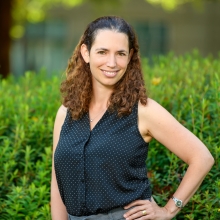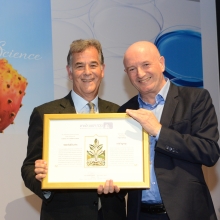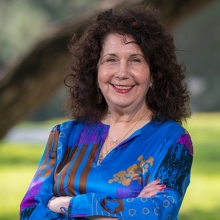The pull of probability
Introducing mathematician Dr. Eliran Subag
New scientists

Anyone who has navigated with a compass would find it easy to describe how, in two dimensions, the poles of a solid magnet align either to the north or to the south. But in higher dimensions—starting with good old fashioned 3D, and reaching up toward infinity—describing magnetic behavior becomes devilishly difficult. This is the theoretical puzzle that fascinates Dr. Eliran Subag.
Dr. Subag is interested in probability theory, particularly Gaussian fields—a model of random functions whose probabilistic character makes them useful for applications in physics, computer science, and medical imaging.
In his doctoral research, he applied this theory to “disordered” magnetic systems and materials called spherical spin glasses, in which atoms’ spins are not aligned in a regular pattern. Adapting an approach developed by his PhD advisor at the Weizmann Institute, Prof. Ofer Zeitouni, for the characterization of logarithmically correlated Gaussian fields, the results of Dr. Subag’s doctoral research was published in Inventiones Math, one of the most important journals of the academic mathematics community.
Attracted to uncharted territory
Dr. Subag began his training at the Technion, where he completed a BSc in electrical engineering—“I was looking for a profession,” he recalls—and also took courses in pure math. Eventually, his passion for theory led him to focus on academic mathematics, a transition made easier by his masters’ advisor at the Technion, Prof. Robert Adler, a member of the Faculty of Electrical Engineering who is also a specialist in probability. Dr. Subag’s work on probabilistic models prepared him for his PhD studies at the Weizmann Institute. His doctoral research on spin glass models—in extreme dimensions nearing infinity—have advanced this very complex field.
Having recently completed a postdoctoral fellowship at the prestigious Courant Institute of Mathematical Sciences at New York University, Dr. Subag is excited to be back in Rehovot and on campus as a faculty member.
“The problems I work on are of interest to physicists, who have been working on spin glass models since the 1970s,” he says, adding that his own work is entirely in the realm of mathematical theory. “But my personal focus is development of the mathematics needed to gain knowledge about complex processes that cannot be directly calculated. It’s a fascinating challenge because—like the many probabilistic scientific disciplines it influences—you never know where it’s going to take you.”
Biography
Born in Kiryat Motzkin, Israel, Dr. Eliran Subag completed his BSc and MSc in electrical engineering, both summa cum laude at the Technion—Israel Institute of Technology in 2010 and 2013, respectively. He completed a PhD in mathematics at the Weizmann Institute under the direction of Prof. Ofer Zeitouni in 2017, then worked as a postdoctoral fellow at the Courant Institute of Mathematical Sciences at New York University in the lab of Prof. Gérard Ben Arous.
He joined the Weizmann Institute in 2020.
Among his academic and professional honors, Dr. Subag received the Nessyahu Prize of the Israel Mathematical Union and the John F. Kennedy Prize for outstanding PhDs graduating from the Weizmann Institute. His studies were supported by a Wolf Foundation Fellowship, the Otto Schwartz Award, an Adams Fellowship, the WorldQuant Foundation Scholarship and a Meyer Excellence Program Fellowship, the Freescale Israel Excellence Award for Undergraduate Students, and an Alfred and Anna Grey Scholarship. He is a Junior Fellow in the Simons Society of Fellows. He received the 2020 Sir Charles Clore Prize from the Weizmann Institute.








